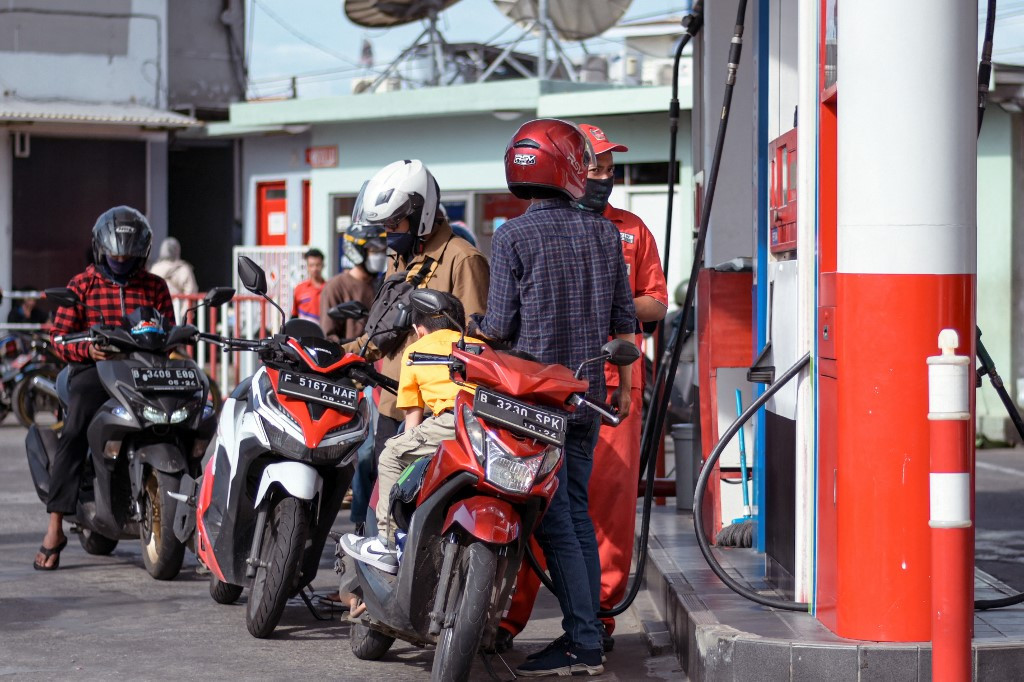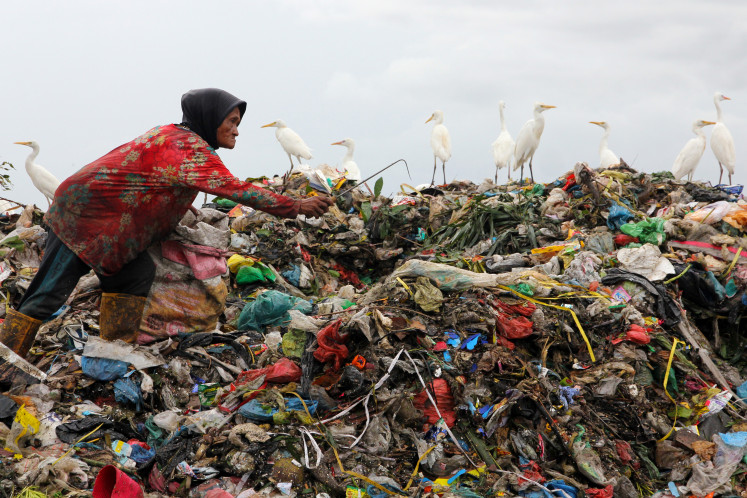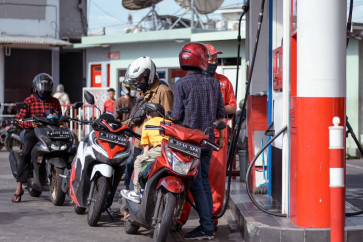Popular Reads
Top Results
Can't find what you're looking for?
View all search resultsPopular Reads
Top Results
Can't find what you're looking for?
View all search resultsFuel price hike and domestic consumer spending patterns
The government decided to increase the price of subsidized Pertalite and Pertamax gasoline and Solar diesel on Sept. 3 to manage the energy subsidy quota not to exceed Rp 502 trillion (US$33.5 billion).
Change text size
Gift Premium Articles
to Anyone
T
he government decided to increase the prices of subsidized Pertalite and Pertamax gasoline and Solar diesel on Sept. 3 to manage the energy subsidy quota not to exceed Rp 502 trillion (US$33.5 billion). The government’s calculations reveal that the subsidy could increase to more than RP 690 trillion this year if the consumption of Pertalite and Solar were not managed. This will affect the spending posture in the 2023 state budget as the government has decided to lower the budget deficit to the pre-pandemic level of below 3 percent.
The impact of domestic gasoline prices, as many predicted, will result in a higher inflation rate, lower purchasing power and, in the end, affect growth in the fourth quarter of 2022. We forecast that rising prices of Pertalite, Pertamax and Solar will increase this year’s inflation rate to 6.3 percent (versus our initial inflation forecast of 4.6 percent) while affecting lower growth of 5.0 percent through consumer spending.
We saw Indonesia’s economic growth accelerate further to around 5.3 percent to 5.4 percent this year on the back of a stellar performance in the second half of 2022 at 5.23 percent. Indonesia’s recovery was broad-based and highly correlated with several supporting factors: subdued COVID-19 cases and mobility relaxation, commodity price recovery and responsive regulations from the government and Bank Indonesia.
Now, the million-dollar question will be how the fuel price-hike affects Indonesia’s consumer spending pattern. Currently, though quite resilient, spending levels in the third quarter of 2022 continue to be restrained amid rising inflation. After experiencing normalization post its peak during Idul Fitri, consumer spending has remained stuck at pre-Ramadan levels since June.
This is shown by the Mandiri Spending Index (MSI), where the index remains flat in the last four months, a pattern that has never been seen before. During this period, annual inflation rose to above 4 percent, the highest in the last 5 years. Nonetheless, the current spending level is still quite resilient, being 29 percent above pre-pandemic levels.
The impact of rising prices keeps pressures on durable and service consumer spending, suggesting that consumers may be defensive. In general, spending for all categories (durable/non-durable/service) grew cumulatively from January to August compared to the same period in 2021. Nevertheless, there are variations in the growth rate. Spending on durable goods (e.g. household and electronics) and services (e.g. entertainment, sports, travel, or hotels) tend to slow down while non-durable consumer spending remains strong, driven by a strong demand as shown in increased volume.
Consumers are now prioritizing spending toward basic necessities. In terms of value, year to date growth in the first eight months of 2022 for durable goods and services was 6.6 and 2.8 percentage point (ppt) lower compared to growth in the first eight months of 2021. In contrast, non-durables, such as food and groceries, recorded an increase of 12.9 ppt. The increase in non-durable growth, at a time when spending on durable goods and services declined due to rising inflation, indicates that consumers are shifting toward basic day-to-day spending. Thus, consumers tend to be more defensive.


















